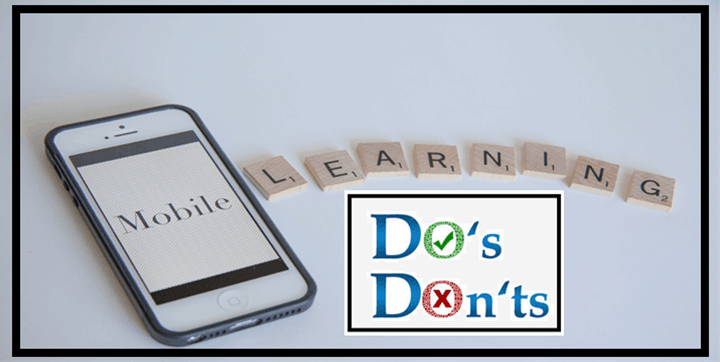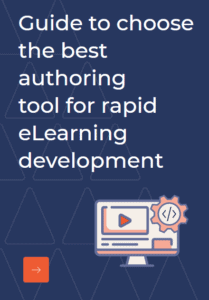From its very inception mobile devices have been a revolution of a kind. It's no wonder that it has now made way to each and every organization and household, and that a day without the multi-purpose gadget is almost unimaginable. Even more interesting is the fact that the device that was once considered to be a distraction to learning has now become an instrument that delivers learning. A new report by Ambient Insight called 'The 2014-2019 Worldwide Mobile Learning Market' states that, "Global Mobile Learning Revenues Will Reach $14.5 Billion by 2019" and if stats are anything to go by then Mobile Learning is really in the exponential phase of growth.
Most organizations have accepted the benefits of mLearning and have now started working on creation of new mLearning courses and also looking into the possibilities of converting the existing eLearning to mLearning. We have been creating mLearning (Mobile Learning) for some time now and based on our experience here are some Dos and Don'ts.
1. DO Analyze the Need
Yes, and as mentioned in few of our earlier posts it is an essential step. Why create mLearning when you have no need for it? So, ask the right questions, understand the organization’s requirement and then move ahead. Future proofing is good, but even before that you need to understand what your future requirements can be.
2. DO Understand What mLearning (Mobile Learning) Is
Once the debate on whether or not mLearning is required then you need to clearly understand what you are aiming at. So, mLearning is eLearning on mobiles. Very often this is interpreted in the most literal way and you end up creating an exact same replica of the eLearning course in a mobile compatible format. Another common assumption is that it covers Tablets too. But, do understand that tablets can run eLearning created for desktops without much issues much issue, and that doesn’t apply for Mobile devices.
3. DO Understand the Strong Points of the Device
A mobile device has a lot to offer- sensors, cameras, location-based services and much more. The mLearning we create should utilize these functions. Augmented Reality Apps on mobiles are already being used by Museums and product-based organizations for training.
4. DO Try to Use is as on the go a Supportive Tool
Mobiles are supportive devices. The Go-to Device for quick references, keeping track of the schedules, instant communication and used frequently for informal discussions too, and hence can be of great uses as assistive, and supportive tools for learning.
5. DO Use Multimedia
Videos on mobiles is a trend, which is why using short snippets of videos as performance support tools is a good way to deliver learning. Videos however should be short and optimized for mobile usage-you don't want to annoy your learners with heavy file size.
6. DON'T Make it an Information Dump
Link this with the second point and you get the answer. While creating mLearning understand the device usage pattern and design the courses accordingly. Also understand that mobile devices have smaller screens which means courses with text alone can be ignored easily. Try to keep it simple and present it in a mobile friendly way.
7. DON'T Try to Replicate
Remember, mLearning doesn't always have to be standalone. Mobile Learning is better suited for performance support, updations and as refreshers. While converting the existing eLearning to mLearning always keep the device in mind and try not to replicate the same learning experience. This includes navigation, button styles, font size & style too.
8. DON'T Make it Too Formal
Mobile is an instrument used to hold informal discussion through various social media platform. Try to include those elements in mLearning. Try to keep the content light and don't make it too formal - remember learning can't be forced.
9. DON'T Forget the Relevance of Context
Content Rules-but the context defines. A simple thing to do before creating mLearning is define the context. Is it for performance support, is it for assessment, or is it just in time assistance? All these require different content and design elements too.
10. DON'T Ignore Connectivity Issues
Mobile devices are mostly used in transit. Many a times connectivity can be a major issue and in such cases having an offline mode can be quite helpful. Also keeping the file size low can help the users learn even in low bandwidth.
As mobile devices keep evolving so will mLearning, but the above mentioned points can be helpful even at those times. The instructional design approach for mLearning however will have to evolve with the times and learning patterns.
At Knowzies, we have helped many organizations with their Custom Mobile Learning and Mobile App development. Feel free to discuss any mLearning related issues/requirements with us on info@www.knowzies.com.



